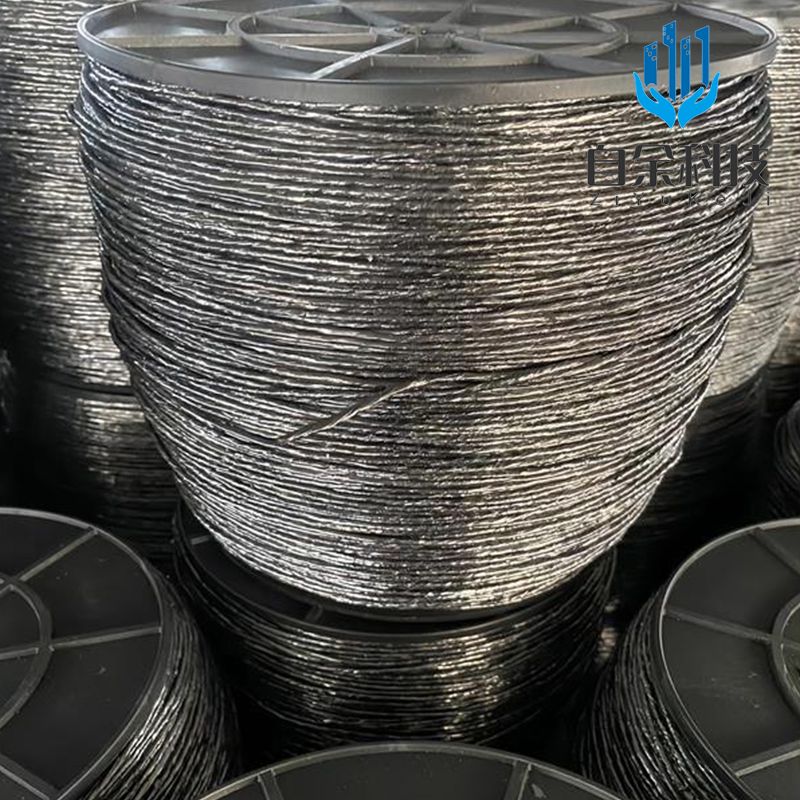Flexible graphite wire has become a crucial component in many industries due to its outstanding heat resistance, chemical stability, and flexibility. This unique material, derived from natural graphite, undergoes special treatment to form a highly durable wire with a range of industrial applications. In this article, we’ll explore in detail what flexible graphite wire is, how it’s made, and the significant benefits it offers.
Flexible graphite wire is a type of material produced from expanded graphite, a highly flexible and compressible form of graphite that can be shaped into sheets, ribbons, or wires. Graphite itself is a naturally occurring form of carbon known for its high thermal conductivity and chemical resistance. When treated through an expansion process, this natural graphite transforms into flexible sheets or wires that maintain the beneficial properties of graphite while offering added flexibility.

High Thermal Conductivity: Flexible graphite wire excels in high-temperature applications, thanks to its ability to withstand extreme heat.
Chemical Resistance: It resists corrosion from most chemicals, making it ideal for harsh environments.
Flexibility: The material is easily shaped and bent without breaking, allowing for a wide range of applications.
Low Permeability: It prevents leakage of gases and liquids, making it highly effective in sealing applications.
The manufacturing process of flexible graphite wire begins with the expansion of natural graphite flakes. These flakes are treated with a chemical reagent, typically an acid such as sulfuric acid, which enters the spaces between the graphite layers. When these treated flakes are exposed to high heat, the acid vaporizes, causing the layers of graphite to expand rapidly, resulting in what is called expanded graphite.
Once the graphite has been expanded, it can be compressed into various forms, including sheets and ribbons. For the production of flexible graphite wire, the expanded graphite is typically rolled or twisted into cylindrical shapes, forming a durable and highly flexible wire. This process allows the wire to retain the high-performance characteristics of graphite while providing the necessary flexibility for industrial applications.
In some cases, flexible graphite wire may be reinforced with materials like stainless steel or nickel alloy to enhance its strength and durability. This reinforcement is especially beneficial in applications where the wire may be exposed to high pressure or mechanical stress. The combination of flexible graphite and reinforcing materials results in a wire that can handle extreme conditions without losing its structural integrity.
Due to its remarkable properties, flexible graphite wire is used in a wide range of industries, including automotive, aerospace, petrochemical, and power generation. Below are some of the most common applications:
Flexible graphite wire is widely used in gaskets and seals due to its ability to withstand high temperatures and corrosive environments. It provides excellent sealing performance in industries where preventing leaks of gases or liquids is critical.
In electronics and thermal insulation systems, flexible graphite wire is used to manage heat efficiently. Its high thermal conductivity allows it to dissipate heat effectively, making it a key component in heat exchangers and other thermal management devices.
Graphite is known for its electrical conductivity, and flexible graphite wire is no exception. It is often used in fuel cells, batteries, and other electrochemical applications where efficient conductivity is crucial for performance.
In industries where components are subjected to extreme heat, such as in furnaces or kilns, flexible graphite wire serves as a reliable material for gaskets, packing, and insulation. Its ability to endure temperatures of up to 3000°F makes it invaluable in these high-temperature environments.
The popularity of flexible graphite wire in various industries can be attributed to several key advantages:
One of the standout features of flexible graphite wire is its ability to maintain stability at extremely high temperatures. This makes it ideal for applications where other materials would degrade or fail.
Flexible graphite wire is chemically inert, meaning it doesn’t react with most chemicals. This property is especially important in industries like oil refining, chemical processing, and nuclear power, where materials must withstand exposure to corrosive substances.
With its high strength-to-weight ratio and resistance to wear and tear, flexible graphite wire offers long-lasting performance, reducing the need for frequent replacements and maintenance.
Thanks to its flexible nature, flexible graphite wire can be easily installed in tight spaces or around complex shapes. This flexibility reduces the time and effort required for installation, particularly in challenging industrial settings.
Flexible graphite wire is a powerful solution for a wide range of industrial challenges. Its ability to withstand high temperatures, resist chemical corrosion, and provide long-lasting durability makes it a superior choice for many applications. As industries continue to evolve and demand more from their materials, flexible graphite wire will remain a cornerstone of high-performance solutions.
For more details please contact www.ziyucable.com
Copyright:@2020-2021
Comments Please sign in or sign up to post.
0
0 of 500 characters used